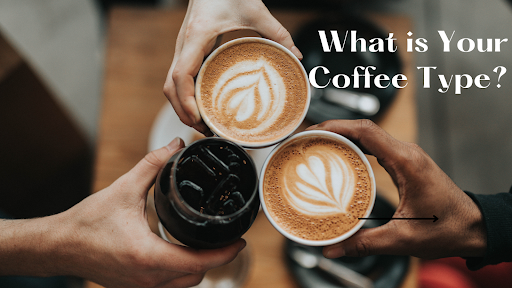We all have been there at some point in our lives—staring at the huge shelf in the grocery store, clueless with the choices galore. Picking up the one right in front might be the easiest option, but wouldn’t you want to have a coffee that could elevate your experience? It’s like choosing a wine; while a layman may call any bubbly champagne, a true aficionado who knows the difference and will be able to cart the right one.
While you might not be able to find someone at the store through all the coffee types and varietals, we are here to walk you through some key factors to take into consideration while buying coffee beans. Whether purchasing the beans or ordering at a cafe, this blog will help you make the most important decision of the day right.
Roast Freshness
Some say that coffee lasts forever, and others suggest that it goes bad. So which statement to trust? The answer is in the basics. Coffee beans are made from a cherry, which is a perishable fruit and is a carefully grown processed agro product. Once coffee beans are roasted, they start losing flavors and end up emanating bad, stale aromas & undesirable flavors within 2 weeks as the oil in coffee goes bad (That said, many experts tend to freeze coffee to preserve it for long periods of time).
So when you go out to buy coffee, it is important that you read the roast date on the label and buy only if it is recent and consume it within 3 weeks of roast to enjoy it the most. Although you can still consume coffee beans that were roasted 4 weeks before, if not preserved, they will lose their flavors and aromas and leave you with a flat cup of tasteless coffee.
Roast Profile
Usually, coffee beans are distinguished as a filter roast and espresso roast based on their roast profiles. You might come across either of these two labels being proudly boasted on the coffee packaging. An espresso roast is prepared in the roaster further to enhance its body and increase caramelization, while a filter roast is developed for a lesser time period to retain the sparkling acidity typical of filter coffee. If you are using an immersion or pour-over brewer or preparing your coffee manually, you can seek coffee bags labeled filter roast.
Blend or Single Origin
While this is a complex area and depends on individual tastes, going by usual standards a blend is good with milk while single-origin coffee makes the perfect cup of black coffee.
Most of the time, blended coffees are made using specific single-origin beans that are meticulously combined on the basis of their body, complexity & other elements to create a balanced espresso. The single-origin beans are very carefully selected to enhance the body of the coffee, add some delicious brown sugaring flavors, or spice it up with a floral complexity.
On the other hand, single-origin coffee is harvested from a specific geographic area, such as an estate or a farm. This allows you to appreciate the nuances in taste or aromas unique to that particular growing area. So if you are a black coffee lover, you will be able to enjoy these subtle nuances which otherwise get masked by the milk.
Some of the top regions across the world known for the finest coffee are Central & South America, India & Indonesia, and Africa.
Selection of Origin
As we have already learned before, different areas add different nuances to the coffee, even if the varietal is the same. These nuances may vary because of economic factors and growing conditions. The same phenomena can be seen in wine for which aficionados have had a long-held appreciation—this is why a French Sangiovese will be very different from that sourced from Italy or Australia.
Although quite opposite to wine, coffee is grown in warmer latitudes and is majorly found in the area between the Tropic of Capricorn and the Tropic of Cancer. It is because of this that the band of latitude has now come to be known as the ‘coffee belt’. Within this belt, there is a vast range of variables like rainfall, sunlight, altitude and soil conditions that alter the outcome and the final taste of your coffee.
But how to understand which one to go with amongst countries producing a wide range of fine beans? The nuances are very evident and your pick depends on your tastebuds—if you desire a fruit-driven brew with floral aromas, African single-origin or blends are a great choice. Ethiopian beans, on the other hand, are made for people who enjoy complex berries and a wine-like palate. Many coffee drinkers also swoon over the delicious Kenya-based brew that flaunts juicy stone fruit-influenced flavors. Or salivate over the thought of South and Central American coffee that boasts a clean appearance and delicate sweetness of sugar browning (like buttery pastry or chocolate), accompanied by a soft fruity character. With most award-winning beans hailing from this region, we’re sure you’ll find a winner for your shelf as well.
Brazil is known for its heavy body coffee with peanut characteristics, Columbia (which is further to the north) produces beans with mellower flavors more on the sweeter spectrum like chocolate, toffee or caramel. If you prefer your coffee with a heavier body and earthy notes, then Indian-origin beans are the best for your palate. They have very distinctive characteristics, exhibiting luscious syrupy body and herbal tones, and might not be a favorite of the masses, putting them in the ‘love or hate’ bracket.
Varietals
Some common coffee varietals that you can find on grocery store shelves are Caturra, Typica, and Bourbon. While most countries favor producing one varietal, and trend that is also popular in coffee cultivation is varietals being transplanted into other growing regions. One of the most sought-after types is the Geisha varietal, which is saturated with sweet, vibrant and clear flavors. While these are priced appropriately, it is a no-brainer to gift someone who is a coffee aficionado.
While these were some of the key factors in selecting the beans, others like the altitude they are grown in and the processing also makes a big difference in the final taste. Hope you enjoyed this read. Stay tuned as we are brewing more interesting blogs for you to enjoy while sipping on your favorite coffee type.



